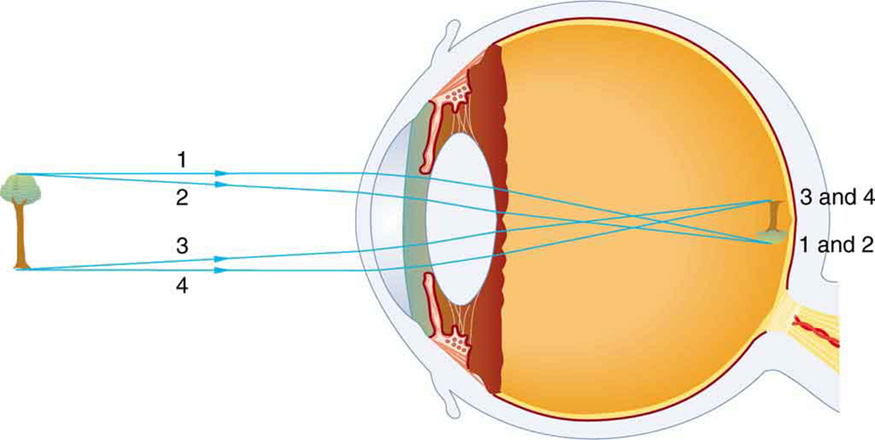Unit 4: My Future
Unit 4, Activity 3: The Technology of My Future
MINDS ON
The Importance of Technology
Some technology enhances our lives greatly, but is it all really absolutely essential?
Complete this interactive to rank the importance of optical technology in your life by determining which of these is a genuine need in your life (as in, I can't function without it) and which is more a want (as in, it would be great to have but I can survive without it).
RankingTech
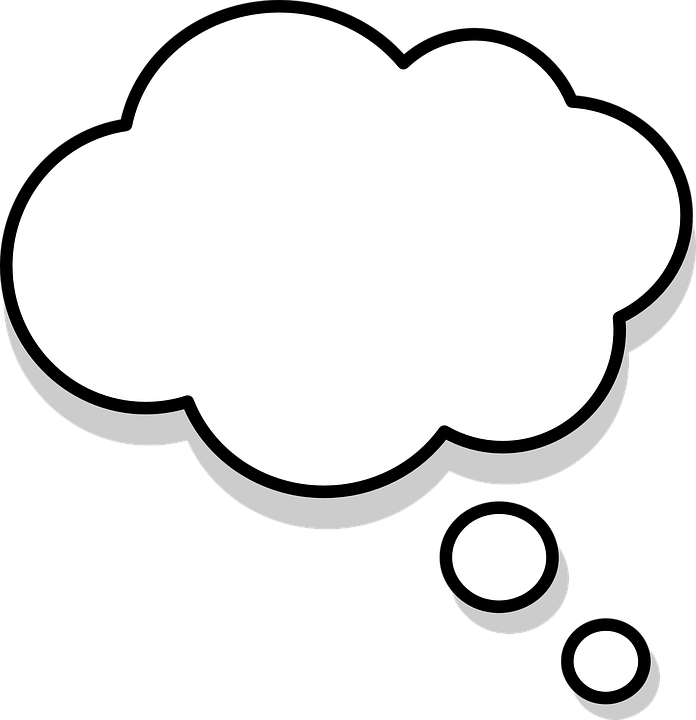 What Do You Think?
What Do You Think?
- Which technology or device was most important to you?
- Did you need to change your ranking after you thought more about wants versus needs?
- How can you determine a want versus a need?
- Were you surprised by how your needs compared to your wants? In what way were you surprised?
- How do you think these optical devices and technology have helped shape our culture and society?
Now that you have considered the general role of optical devices and technology, let's look in greater detail at the properties of light and the specific science behind the converging lens used by both.
ACTION
The Converging Lens
Optical devices and technologies make use of the properties of light and the way that light interacts with their components. Lenses are a component of many optical devices, including microscopes, cameras and eyeglasses.
The lens we will investigate now - the converging lens - gets its name because when parallel light rays are directed toward it, they converge to a single point called the focal point.
This is similar to what you learned about concave mirrors in the My Community Unit, except that light refracts through a converging lens instead of reflecting off the surface.
The following video will help you understand the properties of a converging lens in order to draw ray diagrams and predict where images would focus.
Now investigate for yourself how an image can be formed using a converging lens. Use the following interactive.
ConvergingLens
The Human Eye
Did you know that the human eye itself is an optical device containing a converging lens?
Understanding lenses is important to understanding why we see what we see. Since we constantly use our eyes to interact with technology such as smartphones and computers, they are designed with our eyes in mind.
The following video will help you understand how your eyes work to focus images.
When light is directed towards the eye, it first passes through the cornea, which causes it to refract and pass through the pupil, which is actually a hole in your eye. The light then passes through the lens in your eye, which refracts the light rays again and focuses them on the retina. This in turn produces an image on your retina that the optic nerve sends to your brain, which allows you to see.
The lens in your eye is a converging lens, since light rays converge (or come together) after they enter the eye. The lens changes shape to produce different images.
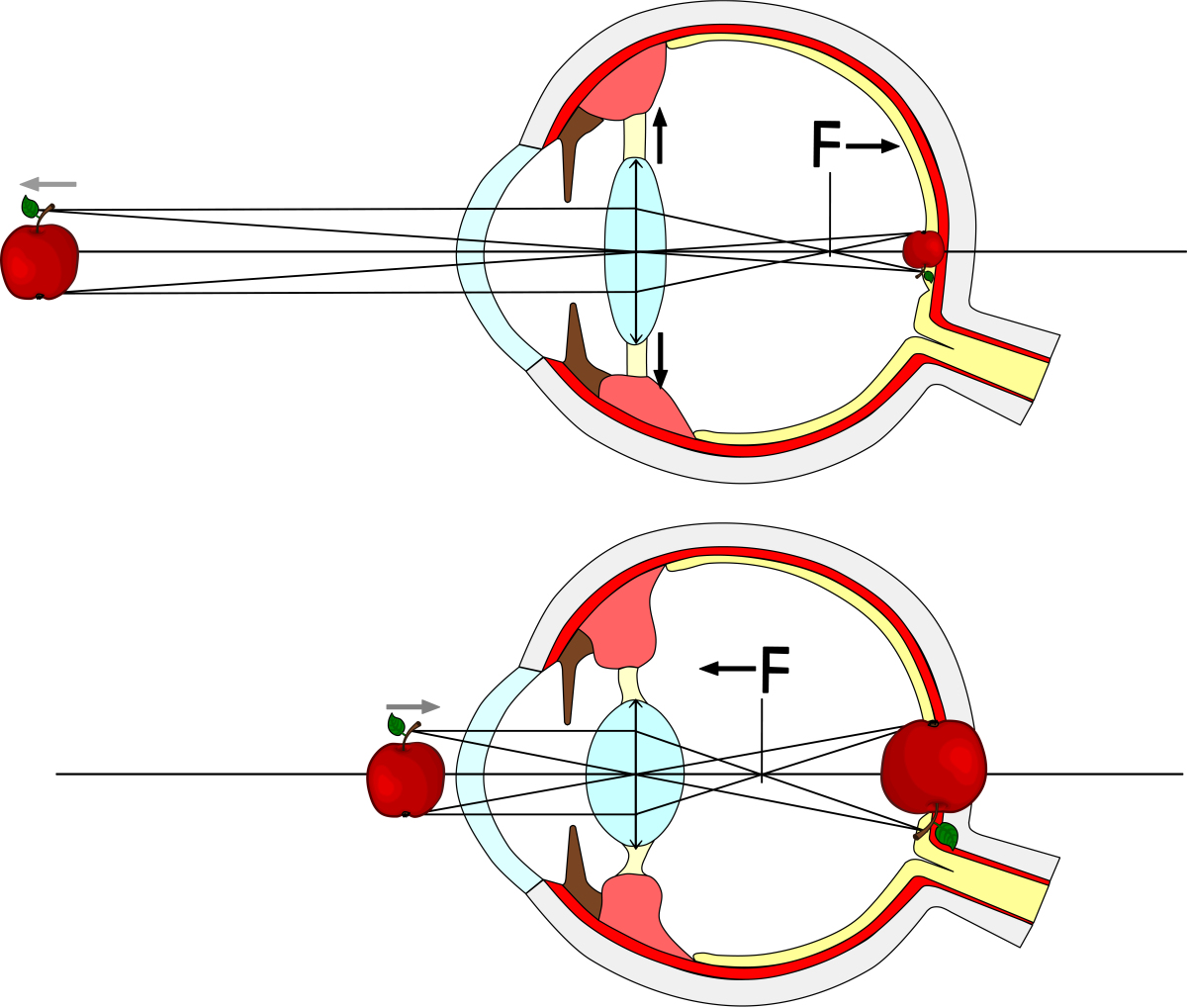
When light shines into your eye, it focuses on a focal point, labelled F in the diagram above. When an object (e.g., the apple) is farther away from the eye, the lens is more narrow and F is farther away from the lens. This produces an image that is smaller than the object.
When the apple is closer to the eye, the lens changes shape (becoming thicker and more curved), making F closer to the lens. This produces an image that is larger than the object.
You can try this on your own by holding an object away from you and bringing it closer to your eye. In the images below, the apple shown far away appears to be 3 inches in height. When the same apple is brought closer to the eye, it appears to be 8 inches in height.
This explains why giant buildings in the distance can look so tiny and why very small objects when brought close to your eye look much larger. It all has to do with how far away the object is from your eye.
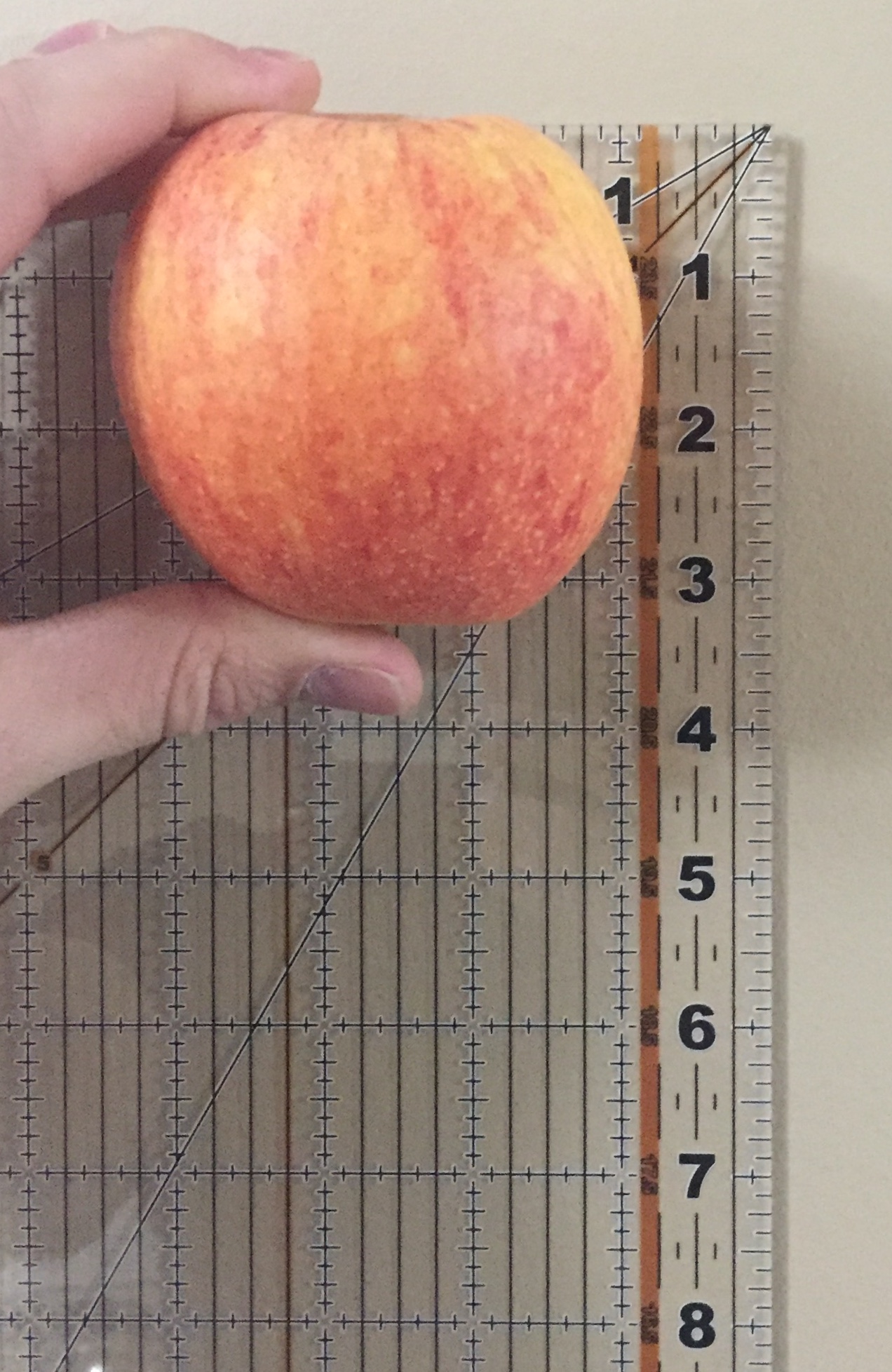
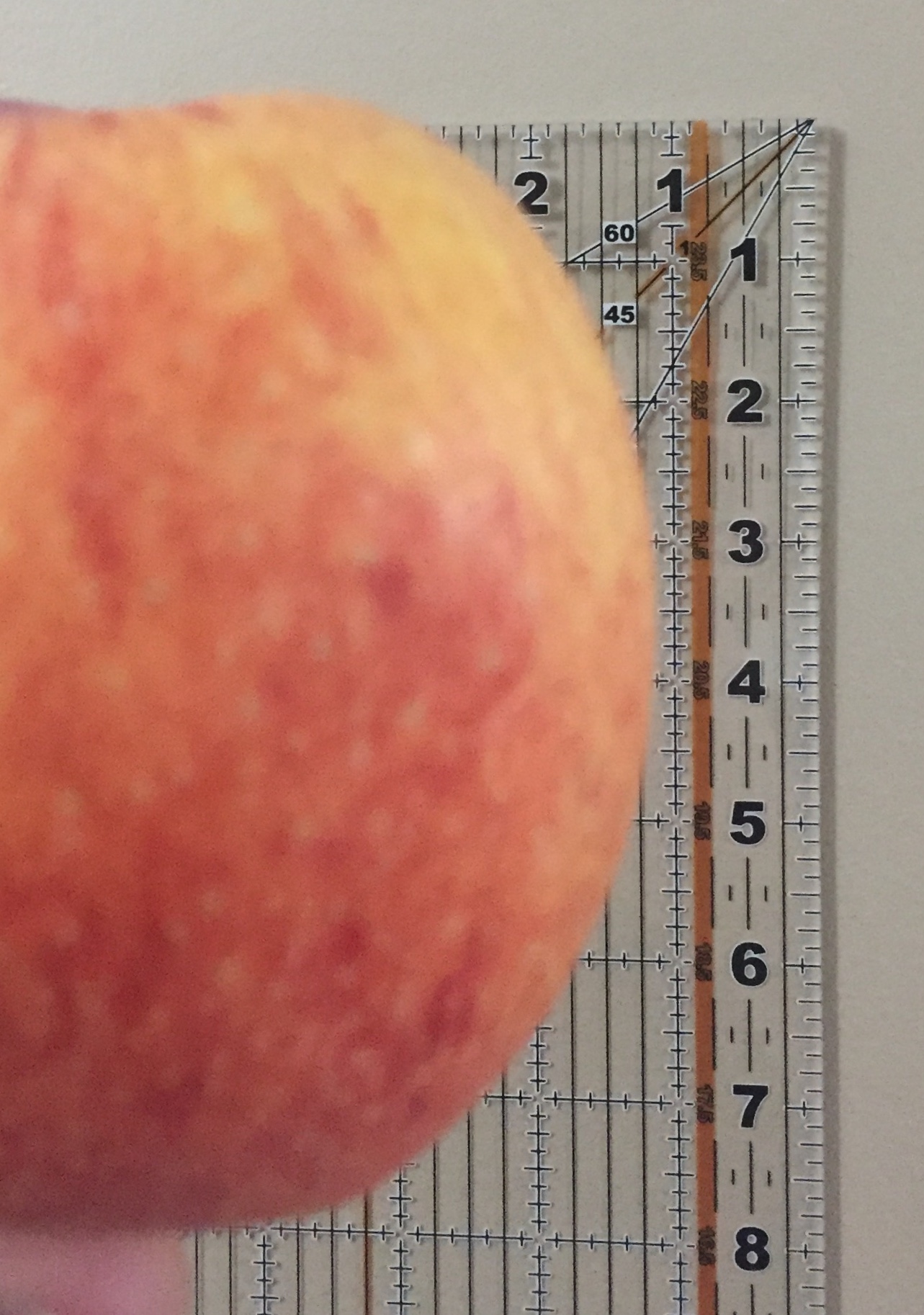
Characteristics of Images in the Eyes
Recall that images can be characterized using the LOST acronym. The same can be done for images formed on the retina of the eye.
Use LOST to help answer the following questions.
Location: where is the image located? For example, is it located on the same side of the lens as the object or on the other side?
Orientation: is the image upright(definition:right side up) or inverted(definition:upside down)?
Size: is the image larger, smaller or the same size as the object?
Type: is the image real(definition:where light rays intersect and can be projected onto a screen) or virtual(definition:where extended virtual light rays intersect but cannot be projected onto a screen)?
 Questions
Questions
Use this image to answer the questions below.
- What are the characteristics (LOST) of the image?
AnswerLocation: compared to the object, the image is on the other side of the lens and appears on the retina.
Orientation: the image is inverted. You can see the leaves of the tree appear at the bottom, so it looks upside down.
Size: the image is smaller than the object.
Type: the light rays converge to form an image on the retina. Therefore, this is a real as opposed to a virtual image.
- What would happen to the size of the image if the tree (the object) were moved closer to the eye?
AnswerThe size of the image would get larger if the tree were moved closer to the eye. In order to focus the image, the shape of the lens in your eye would also change slightly.
- What would happen if the focal point (F) were moved closer to the lens?
AnswerIf the focal point (F) were moved closer to the lens, the image of the tree would be blurry by the time the light rays reached the retina. This is because the clear image of the tree would form in front of the retina and not on the retina.
- Can the human eye focus on two objects at the same time that are different distances from the eye?
AnswerThe human eye cannot focus on two objects at the same time if they are different distances from the eye. If an object at one distance is focusing on the retina, another object closer or farther will focus before or behind the retina, causing it to appear blurry.
To test this, put your finger in front of your face and focus on an object in the distance. Your finger should appear blurry.Now focus on your finger. The object in the distance should now appear blurry.
Vision Disorders
For a clear image to be observed, the image must be focused exactly on the retina. If it were not, the image would appear blurry.
Technology allows us to use eyeglasses that will produce an image focused on the retina and improve our vision. Here are some examples of vision disorders and how they can be corrected with external lenses or eyeglasses.
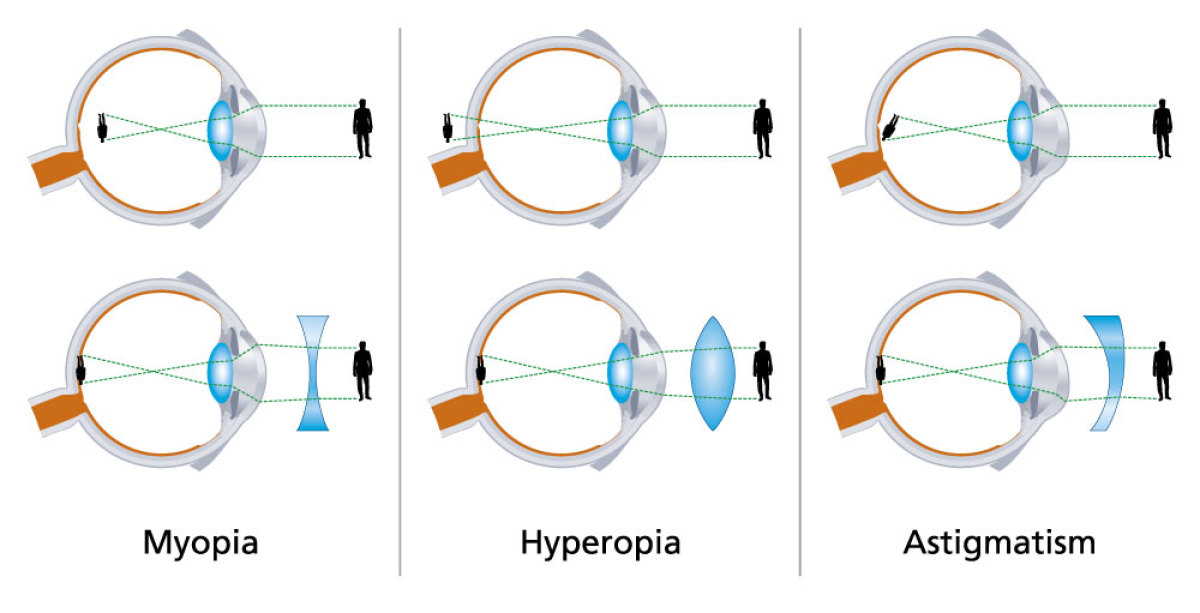
A person with myopia would be considered nearsighted, which means they can see objects up close, but have difficulty focusing on objects farther away.
A person with hyperopia would be considered farsighted, which means they can see objects that are far away, but have difficulty focusing on objects closer to them.
A person with astigmatism may have difficulty focusing light in one place, since the eyeball has an irregular shape.
Corrective lenses (eyeglasses or contact lenses) are one way in which technology has improved our vision because they help focus the light rays onto the retinas of the eyeballs rather than in front of or behind them.
Laser Surgery
Technology can also improve our eyesight by using lasers to cut the cornea, which is responsible for the refraction which enables us to see clearly.
Most laser surgery is performed by cutting a flap of the cornea and removing some corneal tissue (however necessary) to refract light and change the focus of the cornea and lens onto the retina.
CONSOLIDATION
Can Technology Actually Be Harmful To Us?
There is currently much debate about the effects of screen time on our eyes and vision. Many ophthalmologists(definition:eye doctors who can perform surgery) are seeing an alarming increase in myopia (or nearsightedness) in their patients. This is thought to be because of the use of device screens too close to our eyes.
Watch this video to find out more.
According to this, while technology can significantly improve our vision, it also has the potential to significantly damage it! At the very least, we need to be aware that there are always pros and cons related to the availability and use of technology in our lives.
 Screen Time and Your Vision
Screen Time and Your Vision
After watching the video about the effects of screen time on vision, answer the following questions and share your responses with your classmates.
1. What implications might this research have for you?
2. Will this information change your behaviour when using technology? Explain why or why not.
3. Do you agree with the conclusions drawn from this research? Explain why or why not.
4. What is one question you have about this research?
 Self Check
Self Check
| Self Check - Screen Time and Your Vision | |
|---|---|
| I have gathered information (e.g., by viewing the video and making notes) about an issue in science. | |
| I have drawn conclusions about the use of screens and its potential impact on my life. | |
| I have determined the credibility and validity of the scientific study shown in the video. | |
| I have developed a question related to the issue based on the information. | |
| I have used appropriate resources to answer my questions. | |
| I have reported findings based on my research related to my question. |
